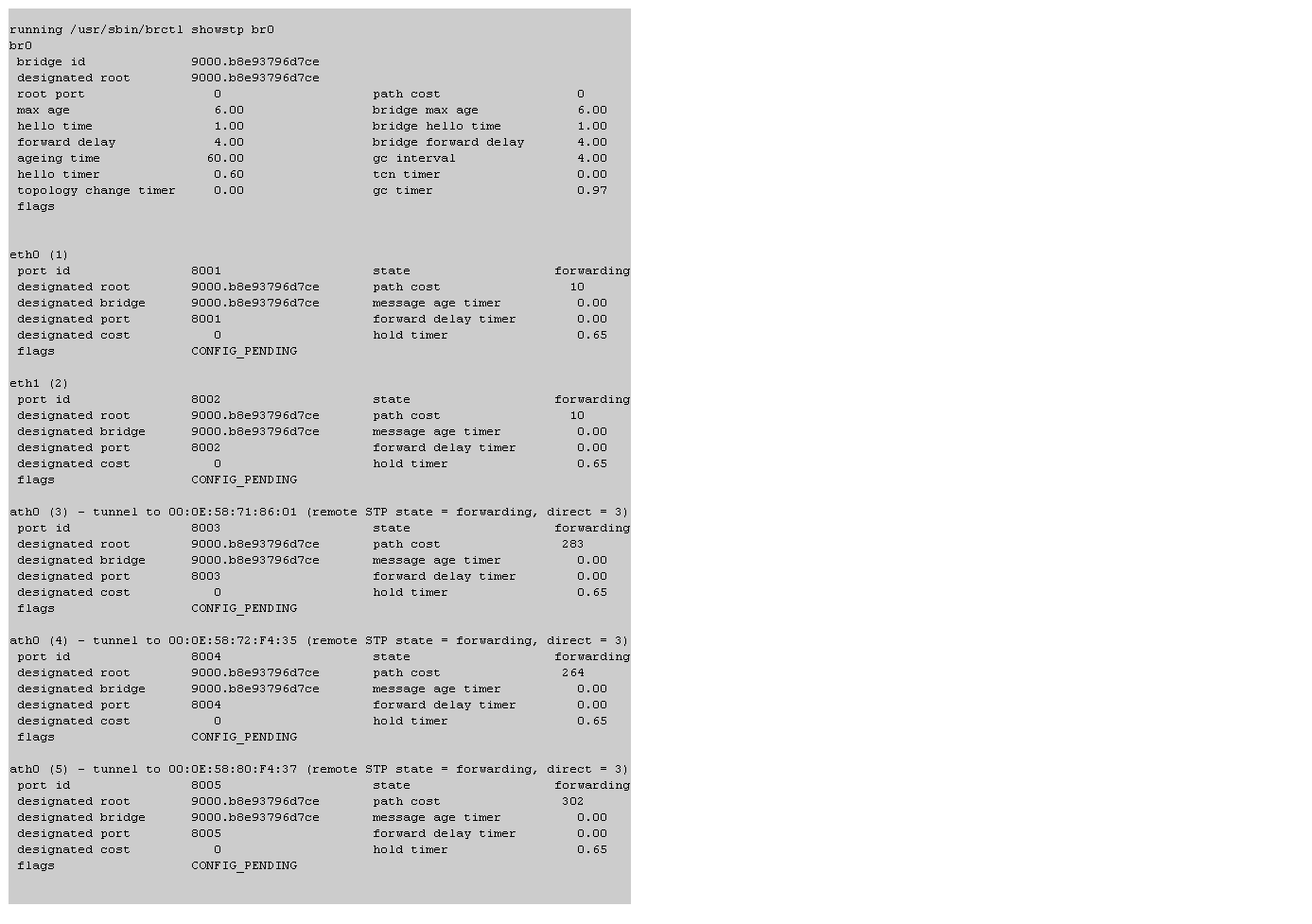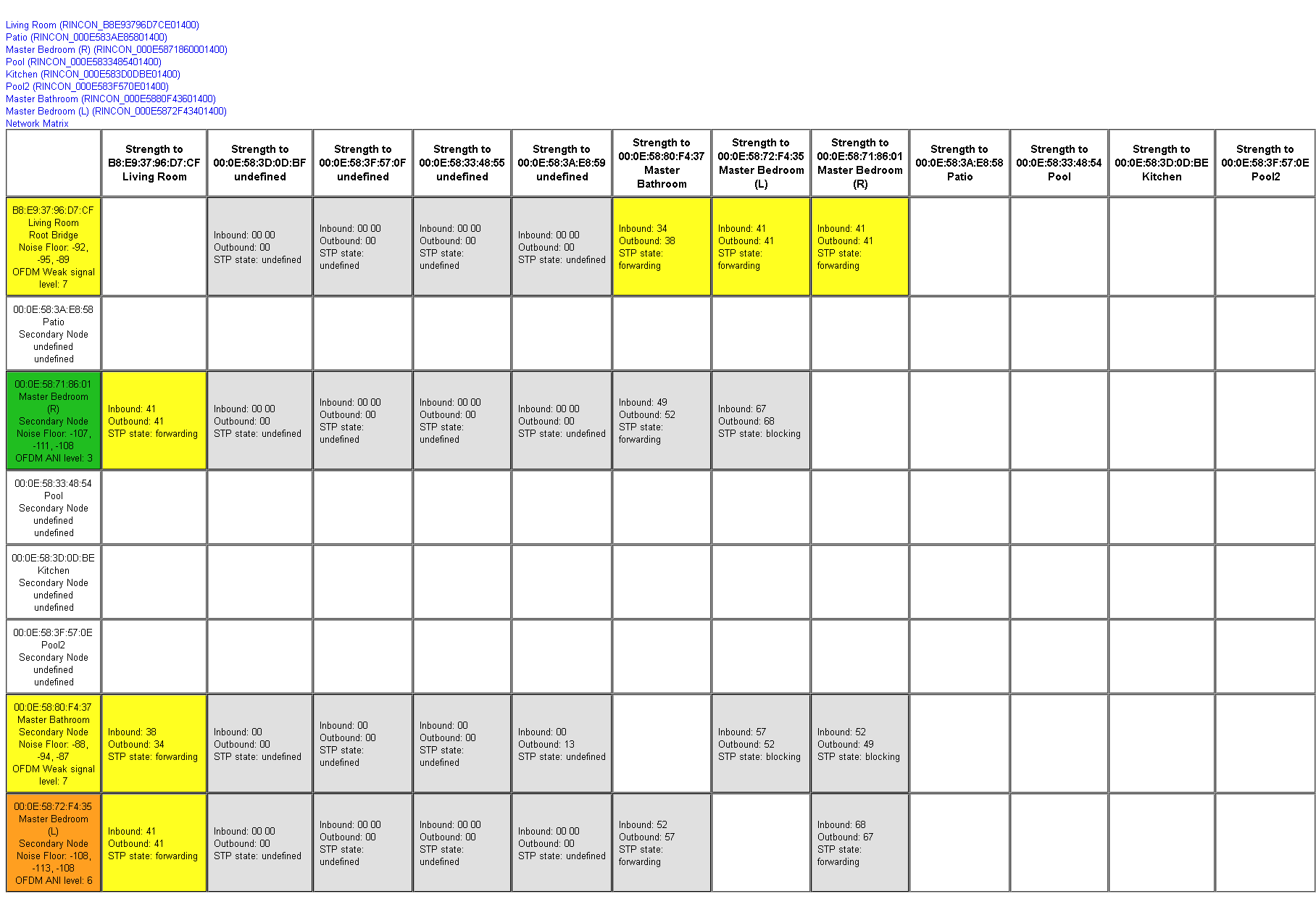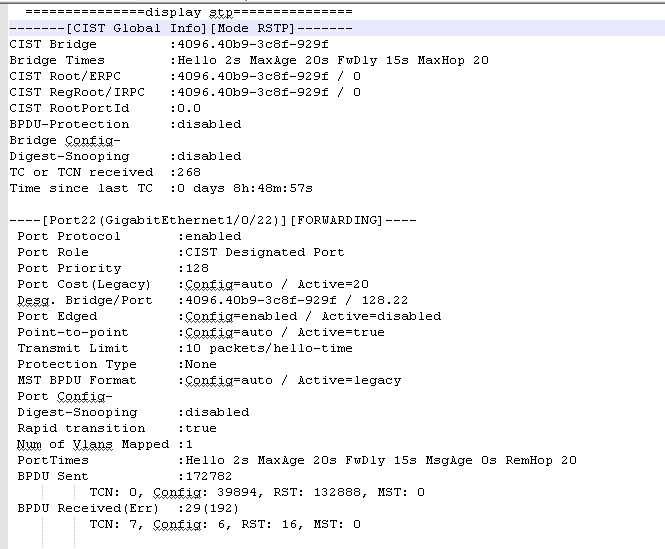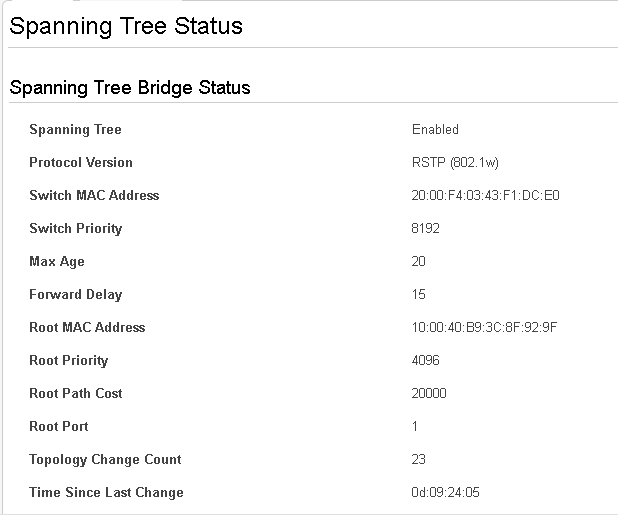I have a HP 1920-24G as core switch and am adding a HP 1810-8G to replace an unmanaged switch in a media room.
The 1920 has 4 ZPs directly wired to it. The 1810 is at the end of a drop from the 1920. On the 1810, I have a Connect attached, which also has a line in from the media amplifier. The Connect also provides sonosnet connectivity to a pair of Play 3's and one Play 5 that are too far from the switch/ZP area.
To get the setup working, I disabled wifi (sonosnet) on the 4 wired ZPs and enabled STP on the 1920 and on the 1810. I set the priority of the 1920 at 4096 and the priority of the 1810 as 8128. The system is operable (no diabling broadcast storms), but the Connect is showing up as root on the Sonos STP, not the HP 1920. My understanding is that the MAC of the 1920 should be the system root. In the 1920 diagnostic file and on the 1810 configuration page, it appears that the 1920 is root - it's just in the Sonos STP output that the 1920 is not root.
In screenshots below, 40b9-3c8f-929f is MAC of the 1920.
SONOS STP CONFIG
SONOS MATRIX
HP 1920 - Partial configuration - Global Settings and Port 22 - drop cable to 1810 switch
HP 1810 - STP Configuration
Answered
STP Issues with HP Switches: 1920-24G (core) 1810-8G (satellite)
Best answer by jishi
Not sure what root port and root path cost affects the election of root bridge, but that might have something to do with it.
I advice you to adjust the path costs for the switches, since they are running RSTP. Either, run them in classic STP, or set the path cost for each port according to classic standard (RSTP have some advantages over classic that you may or may not care about). I have successfully managed to get a managed switch as the root bridge for a Sonos system, but the reporting from the STP page was inconclusive (https://en.community.sonos.com/troubleshooting-228999/only-tertriary-nodes-how-is-it-possible-30888). This was a long time ago though, and I don't remember exactly what I did.
But baseline, path cost needs to be correct for any port that has Sonos gear connected, and also for the link between the switches (any switches that has Sonos gear connected). If you do that correctly, turning on/off wifi has no relevance for the performance of your system. This is probably something that you should try to fix first.
I advice you to adjust the path costs for the switches, since they are running RSTP. Either, run them in classic STP, or set the path cost for each port according to classic standard (RSTP have some advantages over classic that you may or may not care about). I have successfully managed to get a managed switch as the root bridge for a Sonos system, but the reporting from the STP page was inconclusive (https://en.community.sonos.com/troubleshooting-228999/only-tertriary-nodes-how-is-it-possible-30888). This was a long time ago though, and I don't remember exactly what I did.
But baseline, path cost needs to be correct for any port that has Sonos gear connected, and also for the link between the switches (any switches that has Sonos gear connected). If you do that correctly, turning on/off wifi has no relevance for the performance of your system. This is probably something that you should try to fix first.
This topic has been closed for further comments. You can use the search bar to find a similar topic, or create a new one by clicking Create Topic at the top of the page.
Enter your E-mail address. We'll send you an e-mail with instructions to reset your password.






